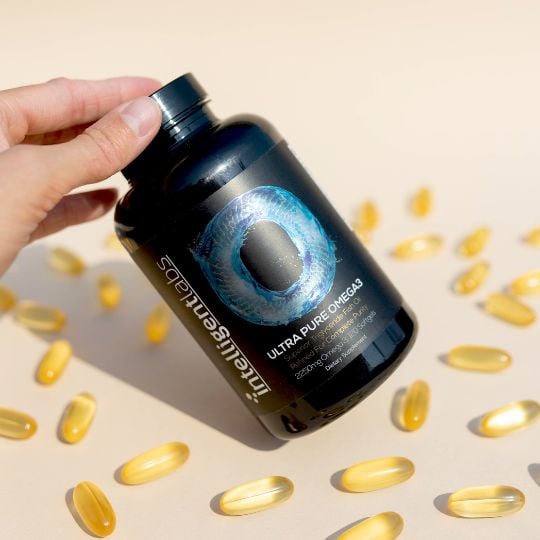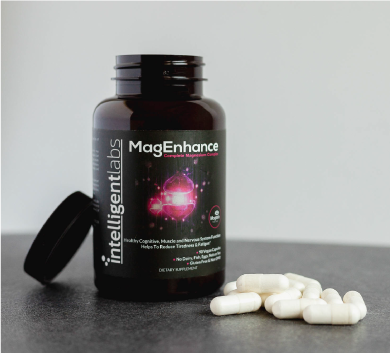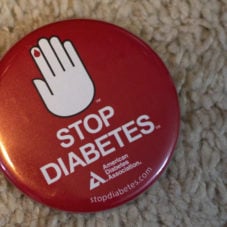Nutrition
Optimal Health With Type 1 Diabetes: Insulin, Diet, and Support
Getting diagnosed with Type 1 diabetes (T1D) is heartbreaking, but it’s not the death sentence it once was. While there is still no cure, T1D is now manageable for many. Insulin therapy, diabetic-friendly diets, and empathetic support groups do help. In this blog post, we’ll share detailed tips that may help people with diabetes live their life to the fullest!
Table of Contents
Does Type 1 diabetes require insulin?
Unfortunately, there’s no getting away from insulin if you have type 1 diabetes.
Insulin is a MUST for T1D patients as they cannot physically make this important hormone. Insulin regulates blood sugar levels and ensures it stays normal. It unlocks the body’s cells to receive the glucose in the bloodstream and use it for energy.
For non-T1D individuals, the body can regulate the careful release of just enough insulin. The body does this automatically based on the food eaten. The surge of glucose that subsequently follows digestion signals the pancreas to release insulin.
With Type 1 diabetes, however, the body produces no insulin. This leads to uncontrolled blood sugar levels.
The only way to manage this is to have multiple doses of injected or infused insulin daily. Otherwise, uncontrolled blood sugar can cause systemic damage to the body.
How much insulin do Type 1 diabetics need to take daily?
Insulin dosage depends on many factors. Food consumed, current and future activity, current blood glucose levels, etc. will need to be considered.
People with T1D need to manually take over the complicated job of the pancreas. They need to do this every hour of every day of their life. Insulin is a temporary treatment and not a cure.
This manual control of insulin dosing is not a walk in the park. It requires:
- careful monitoring of blood glucose levels
- constant calculations, and
- frequent real-time dosing adjustment of injected/infused insulin
Insulin dosing is a complex daily balancing act. It can be difficult to get right, even for those who have been doing it for years. It’s socially isolating. It’s also an incredible mental burden not just on the individual, but their family members as well.

What to eat when you have Type 1 diabetes?
A healthy diabetes diet plan helps regulate blood glucose levels. It also eases the stress and burden of daily diabetes management. There are four components:
#1 – Carbohydrates
Carbohydrates are the primary cause of increased blood glucose levels. Individuals with T1D need to be mindful of their carbohydrate intake. Ideally, carb intake should be spread throughout the day.
Vegetables that are low on the glycemic index (GI) are the best carb option for those with T1D. They’re rich in essential vitamins and mineral content. They also help maintain blood sugar levels that are easy to control.
Examples of low GI foods include green leafy veggies, cucumbers, cabbage, broccoli, cauliflower, eggplant, peppers, green beans, mushrooms, and artichokes.
#2 – Protein
Adequate protein consumption plays a crucial role in building and repairing tissues. It’s also the most nutrient-dense food source. It helps maintain consistent blood sugar levels. Plus, protein sources like chicken, fish, seafood, and eggs are naturally low-carb!
Go for minimally processed protein sources. Avoid protein that is breaded, glazed, or marinated in sugar or fruit juice. These extra ingredients will make blood sugar levels more difficult to manage.
#3 – Healthy fats
A healthy diabetes diet should include plenty of healthy fats. They can help slow down the absorption of carbs. Healthy fats also prevent rapid blood spikes and provide satiety, too.
Examples of healthy fats include avocados, nuts, seeds, and olive oil.
#4 – Micronutrients
Studies have found that individuals with T1D often lack adequate serum levels of essential vitamins and minerals. These may include Vitamin D, magnesium, potassium, and zinc.
A well-balanced diet can help meet these requirements. Eating a variety of fruits, vegetables, proteins, and dairy products is an excellent idea. In some cases, a doctor or dietitian may recommend specific supplementation based on individual blood test results.
What are examples of supplements for type 1 diabetes?
Note: Please consult with a medical professional before taking any dietary supplements.
Supplementation for type 1 diabetes commonly includes the following:

Omega-3
Omega-3 may help T1D patients with chronic inflammation. Animal models show it may help decrease inflammation. It may also potentially regenerate insulin-producing cells in the pancreas (1).
This suggests that Omega-3 may play a role in slowing down the progression of T1D. It may even help prevent T1D in those genetically predisposed to the condition (2).
Berberine
Berberine is a plant extract which stimulates enzymes that break down glucose, thus helping lower blood sugar levels (3).
Taking Berberine may potentially help repair pancreatic beta cells. Like Omega-3, animal studies also report that Berberine may help prevent the progression of type 1 diabetes (4).
Vitamin D3/K2 combo
People with T1D are more likely to have low bone mass. They’re therefore more likely to suffer from bone fractures and falls (5).
For optimal bone support, look for a product that combines both vitamins in one pill. Vitamin D helps with calcium absorption. Vitamin K then directs the calcium to where it’s needed most.
Zinc
Type 1 diabetics are more likely to be deficient in Zinc than non-diabetics. Zinc helps regulate blood sugar levels, among other health benefits (6).
Additionally, Zinc may also offer protection against diabetic neuropathy. It’s an eye condition that affects nearly everyone with T1D (7).

Electrolytes (Magnesium, Potassium and Sodium)
Electrolytes are minerals that help the body absorb fluids. They get flushed out fairly easily though when we sweat or use the toilet. So, regular replenishment is a must.
Unfortunately, due to the nature of T1D, electrolyte disorders are pretty common. A significant imbalance may even be life-threatening. Staying hydrated is essential. So is learning the type of electrolyte imbalance.
If you’re low on Magnesium, MagEnhance Complete Magnesium Complex may help ensure you get enough of this vital nutrient!
Methylated B vitamins
Methylated B vitamins are the “active” forms of B complex vitamins. They are helpful for people who cannot convert inactive forms of vitamins to their active forms. Examples include individuals with the MTHFR gene variation who must take the active form of vitamin B9.
That said, individuals with T1D are prone to chronic kidney disease. Fortunately, B complex vitamins may help with blood sugar control. It may also help improve kidney function (8).
Get help from Type 1 diabetes support professionals!
It’s highly recommended for those with T1D to work closely with healthcare professionals. For instance, doctors and Certified Diabetes Educators can help develop an insulin management strategy and meal plan. They’ll consider specific needs, activity levels, and personal goals.
Always remember that regularly monitoring blood glucose levels and adjusting insulin doses is necessary to maintain optimal blood sugar control.
Do you know someone with Type 1 diabetes? Share this information!
To learn more:
1) Free Download >> Optimal Foods For Type 1 Diabetes Health
2) Forget rollercoaster blood sugar levels, join the Premier membership for type 1 diabetes education and community. Achieve non-diabetic blood sugar levels through specific medication management and nutrition. >>Diabetes Redesigned Program
3) Follow diaVerge Diabetes Health: A jumpstart to optimal diabetes management on Instagram & Facebook
References
(1) Purdel C, Ungurianu A, Margina D. Metabolic and Metabolomic Insights Regarding the Omega-3 PUFAs Intake in Type 1 Diabetes Mellitus. Front Mol Biosci. 2021 Dec 3;8:783065. doi: 10.3389/fmolb.2021.783065. PMID: 34926582; PMCID: PMC8678113.
(2) Norris JM, Yin X, Lamb MM, et al. Omega-3 Polyunsaturated Fatty Acid Intake and Islet Autoimmunity in Children at Increased Risk for Type 1 Diabetes. JAMA. 2007;298(12):1420–1428. doi:10.1001/jama.298.12.1420
(3) Xu M, Xiao Y, Yin J, Hou W, Yu X, Shen L, Liu F, Wei L, Jia W. Berberine promotes glucose consumption independently of AMP-activated protein kinase activation. PLoS One. 2014 Jul 29;9(7):e103702. doi: 10.1371/journal.pone.0103702. PMID: 25072399; PMCID: PMC4114874.
(4) Effects and mechanisms of berberine in diabetes treatment, Jun Yin, Jianping Ye, Weiping Jia, Acta Pharmaceutica Sinica B, Volume 2, Issue 4, August 2012, Pages 327-334
(5) Peter Jackuliak, Juraj Payer, “Osteoporosis, Fractures, and Diabetes”, International Journal of Endocrinology, vol. 2014, Article ID 820615, 10 pages, 2014. https://doi.org/10.1155/2014/820615
(6) Ranasinghe P, Pigera S, Galappatthy P, Katulanda P, Constantine GR. Zinc and diabetes mellitus: understanding molecular mechanisms and clinical implications. Daru. 2015 Sep 17;23(1):44. doi: 10.1186/s40199-015-0127-4. PMID: 26381880; PMCID: PMC4573932.
(7) Miao X, Sun W, Miao L, Fu Y, Wang Y, Su G, Liu Q. Zinc and diabetic retinopathy. J Diabetes Res. 2013;2013:425854. doi: 10.1155/2013/425854. Epub 2013 Mar 17. PMID: 23671870; PMCID: PMC3647550.
(8) Vitamin B complex supplementation as a homocysteine-lowering therapy for early stage diabetic nephropathy in pediatric patients with type 1 diabetes: A randomized controlled trial, Nancy Samir Elbarbary, Eman Abdel Rahman Ismail et al. RANDOMIZED CONTROL TRIALS | VOLUME 39, ISSUE 1, P49-56, JANUARY 2020




